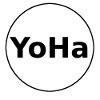
Where Does The Data Go?
(Correspondence with Public Health England)
Within the care-centre, data entry and clinical tools have daily collections. At the end of the month, submissions (of CSV) are collected by the DAMS system. At this moment data validation occurs, checked to make sure staff have appropriately filled in the forms.
Data collection occurs at the end of each month when the DAMS system opens for CSV submissions in the middle of the month. Data must be submitted to National Data Set (the NDTMS Central). This is an 11 month cycle from August to June. July is omitted due to the production of Frozen Dataset that is for annual statistics. The data submitted is attributable to a service user by the following information: initial, D.O.B., gender, and half the postcode. We found that DAMS uses both Role-Based Permissions (employees granted system access rights, can view things others cannot) and System Security Policies (procedures covering any instance where the likelihood of identifying someone through the ‘attributable data’ is greater than a 1 in 5 chance, then that data must be suppressed). There is some provision made for private actors getting access to the DAMS.
Q. Do treatment providers only interact with the software and does the DAMS system comprise of a different database system?
PHE: DAMS accepts CSV and exports CSV. It has a set of role-based permissions that determine the levels of visibility to different people. Treatment providers do have access to a local dataset, which can also be shared with other regional providers, which they can access.
Q: In the data flow diagram on the table, the treatment providers and NTDMS regional teams seem to feedback to one – what are the particulars of that feedback (i.e. data cleaning, reports generation?)
PHE: The data flow diagram basically shows how the DAMS reports are generated and fed back to treatment providers on a monthly cycle.
Q: Do the regional teams extract different reports from DAMS than the NTA team and NDEC teams?
PHE: Yes. The latter two are responsible for generating reports for both treatment providers and a separate set of reports for management on a monthly and a quarterly basis. These reports are also for the attention of providers and partnerships. The regional teams also produce a National Treatment Journey File.
Q: Is a service user still identifiable in the DAMS database?
PHE: Only user attributable data is preserved.
Q: Is a service user still identifiable in the TOP & Modality CSV files extracted and imported into analysis software?
PHE: As this is derived from DAMS, the ‘attributable data only’ factor still applies.
Q: Is the 'multiple analysis system' step writing to relational databases (labelled multiple SPSS datasets)?
PHE: The timeline view implies TOP reports being generated for an individual client.
 bnr#25 => Tantalum Memorial, Setting Up, Manifesta7, Alumix, Bolzano, Italy.
bnr#25 => Tantalum Memorial, Setting Up, Manifesta7, Alumix, Bolzano, Italy.